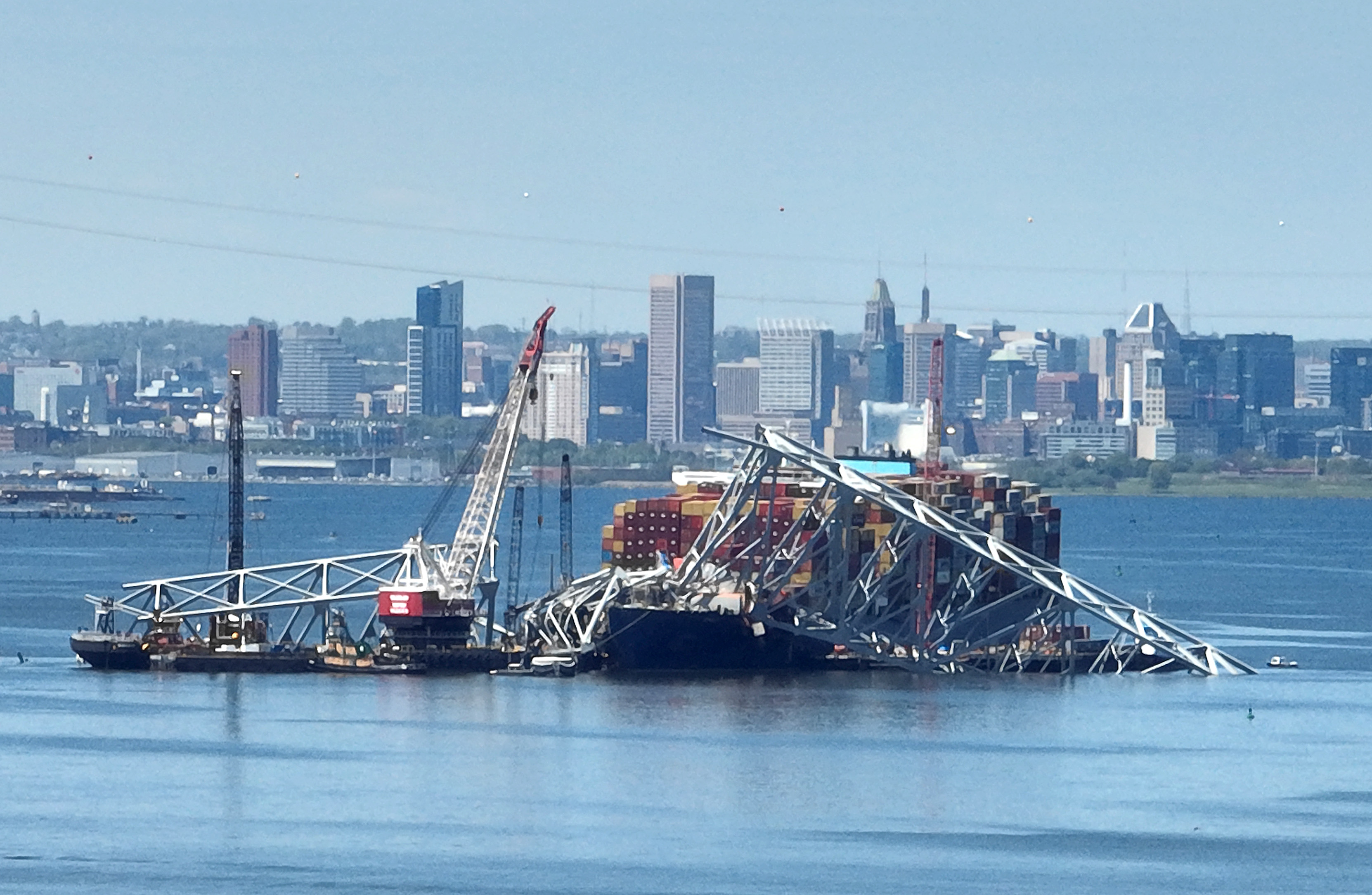A barge slammed into a bridge pillar in Galveston on Wednesday, spilling oil into surrounding waters and closing the only road to a smaller and separate island that is home to a university, officials said. There were no immediate reports of injuries, although officials said one person on the barge was knocked into the water and quickly rescued.
The bridge that leads to Pelican Island, north of Galveston, was struck by the barge at about 9:50 a.m. when a tugboat backing out of Texas International Terminals, a fuel storage operator next to the bridge, lost control of two barges it was pushing, said David Flores, a bridge superintendent with the Galveston County Navigation District.
“The current was very bad, and the tide was high. He lost it,” Flores said.
One of the barges hit the bridge and two telephone poles, he said.
Get DFW local news, weather forecasts and entertainment stories to your inbox. Sign up for NBC DFW newsletters.
The wreck came weeks after a cargo ship crashed into a support column of the Francis Key Bridge in Baltimore on March 26, killing six construction workers.
The accident Wednesday knocked one man off the vessel and into the water, but he was quickly recovered and was not injured, said Galveston County Sheriff's Office Maj. Ray Nolen.
The tugboat was pushing bunker barges, which are fuel barges for ships, Flores said. The accident resulted in oil spilling from the barge into the bay and crews were working to clean it up, he said.
The barge, which Martin Petroleum owns, has a 30,000-gallon capacity, but it's not clear how much leaked into the bay, said Galveston County spokesperson Spencer Lewis. He said about 6.5 miles (10.5 kilometers) of the waterway was shut down due to the spill.
Pelican Island, which is connected to Galveston by the bridge, is home to a large shipyard, Texas A&M University of Galveston, and Seawolf Park, a former immigration station that now attracts tourists to its iconic fishing pier and decommissioned U.S. Navy vessels.
Fire trucks drove over the bridge as workers and law enforcement officials looked at the remnants of the collapsed rail line. Aerial footage showed a large piece of broken concrete and debris from the railroad hanging off the side of the bridge and laying on the barge that officials said rammed into the passageway.
Flores said the rail line only serves as protection for the structure and has never been used.
A statement posted on the City of Galveston's Facebook page said there were no reports of injuries and that the island is currently inaccessible to car traffic.
“Engineers from the Texas Department of Transportation are also en route to inspect the roadway and determine if there is damage,” the statement said. “The bridge will remain closed until it is deemed safe to use.”
One business, Baywatch Dolphin Tours, said they were seeking the university's approval to shuttle people off the island and were planning how to provide a long-term service while bridge repairs are underway.
Opened in 1960, the Pelican Island Causeway Bridge was rated as “Poor” according to the Federal Highway Administration’s 2023 National Bridge Inventory released last June.
The overall rating of a bridge is based on whether the condition of any of its individual components — the deck, superstructure, substructure or culvert, if present — is rated poor or below.
In the case of the Pelican Island Causeway Bridge, inspectors rated the deck in “Satisfactory Condition,” the substructure in “Fair Condition” and the superstructure — or the component that absorbs the live traffic load — in “Poor Condition.”
The bridge has one main steel span that measures 164 feet (50 meters), and federal data shows it was last inspected in December 2021. However, it’s unclear from the data if a state inspection occurred after the Federal Highway Administration compiled the data.
The bridge had an average daily traffic figure of about 9,100, according to a 2011 estimate.
Check back and refresh this page for the latest update. As developments unfold, elements of this story may change.
Sign up for our Breaking Newsletter to get the most urgent news stories in your inbox.



